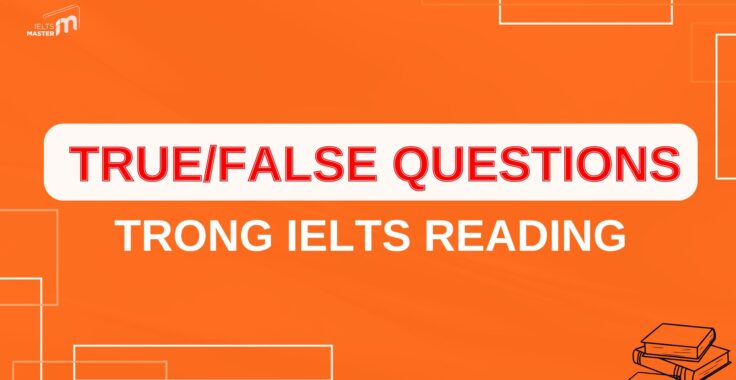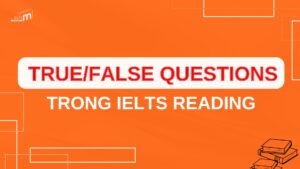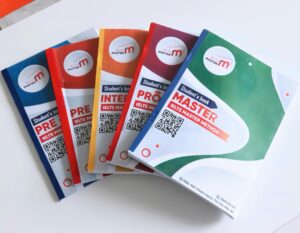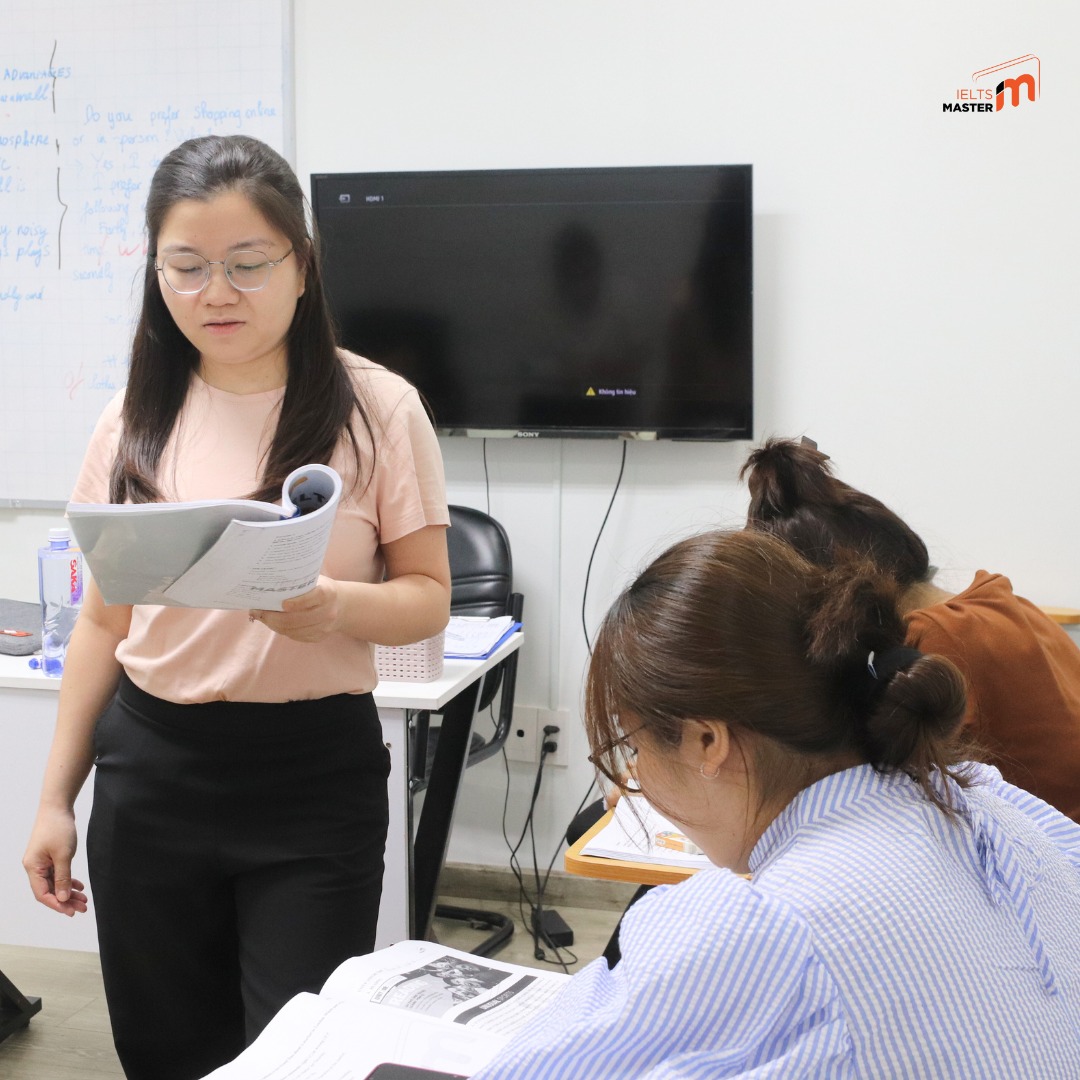
KỸ NĂNG ĐỌC HIỂU: TRUE/FALSE QUESTIONS TRONG IELTS READING
Dạng bài True/False Questions trong IELTS Reading luôn là một thử thách lớn đối với nhiều thí sinh. Dạng bài này không chỉ yêu cầu bạn đọc hiểu thông tin mà còn đòi hỏi kỹ năng phân tích và suy luận logic. Để đạt điểm cao, bạn cần hiểu rõ cách phân biệt giữa True, False và Not Given, cũng như nắm vững chiến lược làm bài hiệu quả. Trong bài viết này, IELTS Master sẽ hướng dẫn bạn từng bước để chinh phục dạng bài này.
1. TRUE/FALSE QUESTIONS LÀ GÌ?

Dạng bài True/False Questions yêu cầu bạn xác định liệu thông tin trong câu hỏi có:
- True: Hoàn toàn khớp với nội dung được đề cập trong đoạn văn.
- False: Mâu thuẫn hoặc trái ngược với thông tin trong đoạn văn.
- Not Given: Thông tin không được nhắc đến hoặc không đủ để đưa ra kết luận.
Ví dụ:
Đề bài: “Renewable energy sources are becoming increasingly popular due to their environmental benefits. However, not all countries have adopted these technologies extensively.”
Câu hỏi:
- All countries have widely adopted renewable energy technologies. –> False (Thông tin trong câu hỏi trái ngược với đoạn văn).
- Renewable energy is environmentally friendly. –> True (Thông tin này hoàn toàn đúng).
- The cost of renewable energy technologies is mentioned. –> Not Given (Thông tin về chi phí không được đề cập).
2. TẠI SAO TRUE/FALSE QUESTIONS QUAN TRỌNG?
2.1. Kiểm tra kỹ năng đọc hiểu và phân tích
True/False Questions yêu cầu bạn không chỉ đọc lướt mà còn phải hiểu ý nghĩa sâu xa của đoạn văn, từ đó xác định thông tin nào được nhắc đến, thông tin nào bị mâu thuẫn hoặc không xuất hiện.
2.2. Đánh giá khả năng nhận biết từ đồng nghĩa và cách diễn đạt khác
Nhiều khi, thông tin trong câu hỏi không được viết giống hệt trong đoạn văn mà được diễn đạt bằng các từ đồng nghĩa hoặc cụm từ thay thế. Điều này đòi hỏi bạn phải có vốn từ vựng phong phú và khả năng nhận biết linh hoạt.
2.3. Cải thiện kỹ năng quản lý thời gian
Khi luyện tập dạng bài này, bạn sẽ học được cách tối ưu hóa thời gian làm bài, kết hợp kỹ thuật đọc nhanh (skimming) và đọc chi tiết (scanning).
3. CHIẾN LƯỢC LÀM BÀI TRUE/FALSE QUESTIONS HIỆU QUẢ
3.1. Đọc kỹ câu hỏi để xác định từ khóa chính
Từ khóa trong câu hỏi thường là:
- Danh từ riêng (tên người, địa danh, tổ chức).
- Số liệu hoặc dữ kiện cụ thể (năm, tỷ lệ phần trăm).
- Các từ chỉ định lượng (always, only, most, all, etc.).
Mẹo:
- Gạch chân hoặc đánh dấu từ khóa trong câu hỏi để tập trung tìm kiếm trong đoạn văn.
- Tìm từ đồng nghĩa hoặc cách diễn đạt tương đương trong bài đọc.
Ví dụ:
Câu hỏi:
“The population of the city increased rapidly in the 21st century.”
- Từ khóa: “population,” “increased rapidly,” “21st century.”
- Từ đồng nghĩa có thể xuất hiện: “growth in population,” “rose significantly,” “over the past century.”
3.2. Sử dụng kỹ thuật scanning và skimming
- Skimming: Đọc lướt để nắm ý chính của đoạn văn, tập trung vào tiêu đề, câu đầu và câu cuối đoạn.
- Scanning: Rà soát nhanh để tìm từ khóa hoặc thông tin cụ thể trong đoạn văn.
3.3. Đối chiếu thông tin trong câu hỏi và đoạn văn
Đây là bước quan trọng nhất để đưa ra đáp án đúng:
- True: Khi thông tin trong câu hỏi hoàn toàn khớp với đoạn văn.
- False: Khi thông tin trong câu hỏi mâu thuẫn với đoạn văn.
- Not Given: Khi thông tin trong câu hỏi không được nhắc đến hoặc không đủ rõ ràng để kết luận.
Mẹo:
- Không suy diễn thêm thông tin ngoài đoạn văn.
- Đọc kỹ cả câu hỏi và đoạn văn để đảm bảo không bỏ sót chi tiết quan trọng.
4. NHỮNG LỖI THƯỜNG GẶP KHI LÀM TRUE/FALSE QUESTIONS

4.1. Nhầm lẫn giữa False và Not Given
Một số thí sinh thường suy diễn hoặc áp đặt kiến thức cá nhân khi trả lời. Tuy nhiên, kiến thức của bạn có thể chưa chính xác hoặc chưa phù hợp với quan điểm tác giả bài viết, vì vậy, thí sinh chỉ dựa vào thông tin có trong đoạn văn, nếu không có bằng chứng rõ ràng, chọn Not Given.
4.2. Không chú ý đến từ chỉ định lượng
Một lỗi phổ biến khác các thí sinh thường mắc phải đó là không chú ý đến lượng từ chỉ định, ví dụ: Câu hỏi: “All students must attend the seminar.”, trong khi đó, đoạn văn: “Most students are required to attend the seminar.” Như vậy, đáp áp đúng là False
-
- Đáp án đúng: False (từ “all” và “most” mâu thuẫn).
4.3. Phân bổ thời gian không hợp lý
Nhiều thí sinh có xu hướng dành quá nhiều thời gian cho một câu hỏi khó, điều này dẫn tới việc bỏ lỡ cơ hội làm đúng những câu có mức độ khó thấp hơn. Chính vì vậy, nếu không chắc chắn, đánh dấu câu hỏi và quay lại sau.
>> Xem thêm: KỸ NĂNG ĐỌC HIỂU ẨN Ý VÀ CÁCH SUY LUẬN TRONG IELTS READING CÙNG IELTS MASTER
5. VÍ DỤ MINH HỌA: TRUE/FALSE QUESTIONS
A chronicle of timekeeping
- A. According to archaeological evidence, at least 5, 000 years ago, and long before the advent of the Roman Empire, the Babylonians began to measure time, introducing calendars to coordinate communal activities, to plan the shipment of goods and, in particular, to regulate planting and harvesting. They based their calendars on three natural cycles: the solar day, marked by the successive periods of light and darkness as the earth rotates on its axis; the lunar month, following the phases of the moon as it orbits the earth; and the solar year, defined by the changing seasons that accompany our planet’s revolution around the sun.
- B. Before the invention of artificial light, the moon had greater social impact. And, for those living near the equator, in particular, its waxing and waning were more conspicuous than the passing of the seasons. Hence, the calendars that were developed at the lower latitudes were influenced more by the lunar cycle than by the solar year. (2)In more northern climes, however, where seasonal agriculture was practised, the solar year became more crucial. As the Roman Empire expanded northward, it organised its activity chart for the most part around the solar year.
- C. Centuries before the Roman Empire, the Egyptians had formulated a municipal calendar having 12 months of 30 days, with five days added to approximate the solar year. Each period of ten days was marked by the appearance of special groups of stars called decans. At the rise of the star Sirius just before sunrise, which occurred around the all-important annual flooding of the Nile, 12 decans could be seen spanning the heavens. The cosmic significance the Egyptians placed in the 12 decans led them to develop a system in which each interval of darkness (and later, each interval of daylight) was divided into a dozen equal parts. These periods became known as temporal hours because their duration varied according to the changing length of days and nights with the passing of the seasons. Summer hours were long, winter ones short; only at the spring and autumn equinoxes were the hours of daylight and darkness equal. Temporal hours, which were first adopted by the Greeks and then the Romans, who disseminated them through Europe, remained in use for more than 2, 500 years.
- D. In order to track temporal hours during the day, inventors created sundials, which indicate time by the length or direction of the sun’s shadow. The sundial’s counterpart, the water clock, was designed to measure temporal hours at night. One of the first water clocks was a basin with a small hole near the bottom through which the water dripped out. The falling water level denoted the passing hour as it dipped below hour lines inscribed on the inner surface. Although these devices performed satisfactorily around the Mediterranean, they could not always be depended on in the cloudy and often freezing weather of northern Europe.
- E. The advent of the mechanical clock meant that although it could be adjusted to maintain temporal hours, it was naturally suited to keeping equal ones. With these, however, arose the question of when to begin counting, and so, in the early 14th century, a number of systems evolved. The schemes that divided the day into 24 equal parts varied according to the start of the count: Italian hours began at sunset, Babylonian hours at sunrise, astronomical hours at midday and ‘great clock’ hours, used for some large public clocks in Germany, at midnight. Eventually, these were superseded by ‘small clock’, or (6)French, hours, which split the day into two 12-hour periods commencing at midnight.
- F. The earliest recorded weight-driven mechanical clock was built in 1283 in Bedfordshire in England. The revolutionary aspect of this new timekeeper was neither the descending weight that provided its motive force nor the gear wheels (which had been around for at least 1, 300 years) that transferred the power; it was the part called the escapement. In the early 1400s came the invention of the coiled spring or fusee which maintained a constant force to the gear wheels of the timekeeper despite the changing tension of its mainspring. (3)By the 16th century, a pendulum clock had been devised, but the pendulum swung in a large arc and thus was not very efficient.
- G. To address this, (7)a variation on the original escapement was invented in 1670, in England. It was called the anchor escapement, which was a lever-based device shaped like a ship’s anchor. The motion of a pendulum rocks this device so that it catches and then releases each tooth of the escape wheel, in turn allowing it to turn a precise amount. Unlike the original form used in early pendulum clocks, the anchor escapement permitted the pendulum to travel in a very small arc. Moreover, this invention allowed the use of a long pendulum which could beat once a second and thus led to the development of a new floor-standing case design, which became known as the grandfather clock.
- H. Today, highly accurate timekeeping instruments set the beat for most electronic devices. Nearly all computers contain a quartz-crystal clock to regulate their operation. Moreover, not only do time signals beamed down from Global Positioning System satellites calibrate the functions of precision navigation equipment, they do so as well for mobile phones, instant stock-trading systems and nationwide power-distribution grids. So integral have these time-based technologies become to day-to-day existence that our dependency on them is recognised only when they fail to work.
Cambridge 8 Test 1 Passage 1
- The FAA was created as a result of the introduction of the jet engine.
Keywords: FAA, created, jet engine
In paragraph C, the writer argues that “It was only after the creation of the FAA that full-scale regulation of America’s airspace took place, and this was fortuitous, for the advent of the jet engine suddenly resulted in a large number of very fast planes…” This means that the jet engine was created after the formation of the FAA.
=>ANSWER: FALSE - Air Traffic Control started after the Grand Canyon crash in 1956
Keywords: after Grand Canyon crash, 1956
In the second paragraph, the writer states that “Rudimentary air traffic control (ATC)
existed well before the Grand Canyon disaster.”
=>ANSWER: FALSE - Beacons and flashing lights are still used by ATC today.
Keywords: beacons, flashing lights, used, today
In this passage, the writer does not mention whether beacons and flashing lights are still
used by ATC today. Beacons and flashing lights are referred to in paragraph B, but we are
not told if this system has been abandoned completely or is still used. So, the statement is
not given.
=>ANSWER: NOT GIVEN
MẸO LUYỆN TẬP TRUE/FALSE QUESTIONS
6.1. Luyện tập hàng ngày
- Sử dụng tài liệu chính thống như Cambridge IELTS hoặc các bài đọc mẫu trên trang IELTS Master.
6.2. Tự phân tích và tìm lỗi sai
- Thu âm quá trình làm bài và tự phân tích đáp án để hiểu rõ sai lầm.
6.3. Nhận phản hồi từ giáo viên
- Tham gia các lớp học tại IELTS Master để nhận được hướng dẫn chi tiết và cải thiện kỹ năng.
8. KẾT LUẬN
Dạng bài True/False Questions trong IELTS Reading không khó nếu bạn nắm rõ cách phân tích câu hỏi và áp dụng chiến lược hiệu quả. Hãy luyện tập thường xuyên và áp dụng những mẹo làm bài trong bài viết này. Với sự hỗ trợ từ đội ngũ giảng viên tại IELTS Master, bạn sẽ tự tin đạt điểm cao trong kỳ thi IELTS.
_______________________________________________________________________________________________________________________________________________________________________
📍 Thông tin liên hệ:
Địa chỉ:
CN1: 105 đường D, khu dân cư Chánh Nghĩa, Thủ Dầu Một, Bình Dương
CN2: 70 Đường M, Khu Phố Nhị Đồng 2, Dĩ An, Bình Dương 75300, Việt Nam
Hotline: 0868 234 610
Website: https://ieltsmastervn.edu.vn/
Facebook: https://www.facebook.com/ieltsmasterbinhduong
>> Xem thêm: Thành tích học viên IELTS Master





